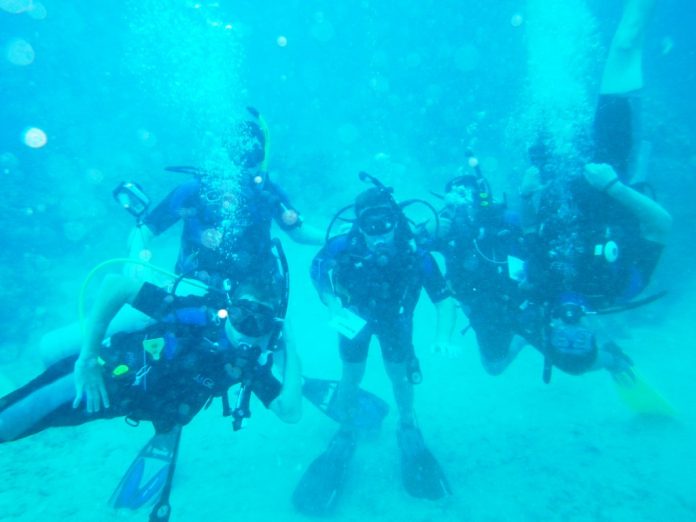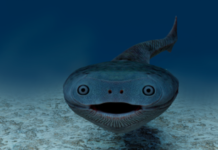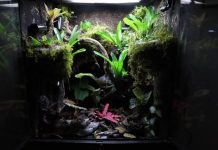For three weeks this summer, a group of Jesuit seniors and juniors participated in our first ever Marine Biology course. Under the instruction of science teachers Mr. Ben Kirby and Dr. Todd Gruninger, students studied the basics of marine biology in the classroom at Jesuit for two weeks before traveling to the beautiful British Virgin Islands.
During the first week, the classroom portion focused on preliminary topics like the purpose and history of marine biology and its many different fields. Students were required to write a daily blog highlighting what they had learned in class. The participation in the class was exceptional, especially for a summer course. Students across the room would argue myriad topics pertinent to marine biology, including global warming and overfishing.
After a quick second week of class, the young marine biologists were off to the British Virgin Islands for some hands on learning. On July 3, the class departed from DFW
airport bound for San Juan, Puerto Rico. Once they landed in Puerto Rico, the
class caught a 45 minute flight to Tortola, British Virgin Islands. The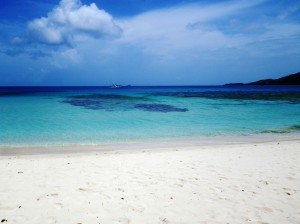
students were greeted upon arrival by four members of the Dive BVI staff, Samantha
and Andrew Hansen, and Jeff and Casey Hunt. They helped the students get to a
boat that would take them to the island of Virgin Gorda. This would be home for
the class over the next seven days.
The class woke up daily to the squawk of roosters, along with a post-card view of the Caribbean. Paradise though, did not come without hard work. Every morning, students took a taxi down to another hotel where they would participate in a 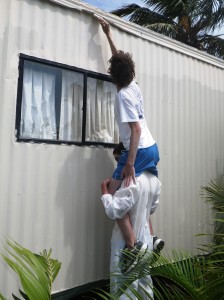 classroom session. Afterwards the students would take a trip to the ocean, either to SCUBA dive or snorkel. The class also practiced fish identification on the beach. Brody McClure ’12 wrote in his blog that while practicing down by the beach he “saw like 10 [feet high] swells, shaaa, gnarly,” and that during snorkeling he saw a moon jellyfish “and totally touched it.”
classroom session. Afterwards the students would take a trip to the ocean, either to SCUBA dive or snorkel. The class also practiced fish identification on the beach. Brody McClure ’12 wrote in his blog that while practicing down by the beach he “saw like 10 [feet high] swells, shaaa, gnarly,” and that during snorkeling he saw a moon jellyfish “and totally touched it.”
On the fourth day of the trip, the dive masters from Dive BVI
treated the class to a special dive site. The class was able to explore the
wreckage of a boat called the RMS Rhone. Built by the same company as the
Titanic, and also deemed unsinkable, the Rhone could not hide from the curious
and intelligent marine biologists. The students studied how marine life inhabits
artificial reefs like ship wrecks. Hayden Tompkins’13 “thought the dive
was really interesting because [he] saw how all the different organisms used
pretty much every single part of the ship differently as a habitat,” and
that he “liked how it encouraged the diversity of a lot of the
animals.”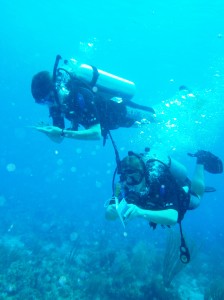
On the last day of diving, the Jesuit students participated in a reef check dive. A reef check dive is a dive that involves swimming along a guide line and tallying different
organisms that are seen in order to get a general idea of the condition of the
reef. In typical Jesuit fashion, students split up the work: a pair of
classmates would lay out the guideline while two other pairs tallied different
organisms, such as fish, algae, and coral.
This expedition would not have been a true Jesuit trip without the class giving back to the community. During the last full day in the British Virgin Islands, students and teachers volunteered to help VISAR (Virgin Islands Search and Rescue). From repainting the VISAR office building to cleaning out the boathouse and scrubbing down the rescue boat, every single Jesuit student and teacher was helping clean up.
Afterwards, the class was taught CPR and emergency medical procedures.
Like all good trips, this expedition had to come to an end. The next day, on July 10, the class departed from the tiny islands back to civilization. Students left with a new
look on biology and many stories to share with their family and friends. Mr.
Kirby commented in his blog that the class “became a close group and . . . guys have increased their knowledge of marine environments.” The trip was a fantastic experience for twenty Jesuit students, and hopefully, it can be continued for many years to come.
To see photos and blogs from the trip, visit http://jcpmarinebio.wordpress.com/home/


